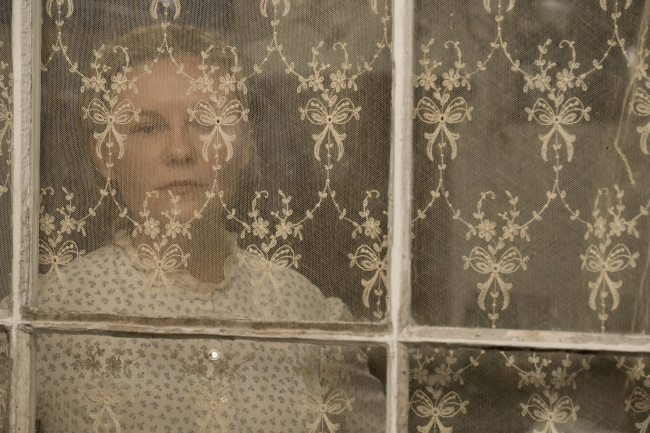Director Don Siegel created in “The Beguiled,” back in 1971, an emotional tension as thick and muggy as the air in summer. The only thing more stifling and heated in this story set during the Civil War was the sexual tension created by a wounded Union soldier (Clint Eastwood) being given sanctuary at a girls boarding school. The film, based on the novel by Thomas Cullinan, mixed passion and betrayal in such dark quantities that at times it played more like a psychological thriller or horror movie.
Director Sophia Coppola has adapted Cullinan’s novel for her own vision of “The Beguiled.” Her take on this story of a Union soldier (Colin Farrell) befriended by the females at a boarding school follows the same plot. The difference between this updated look and the work done by Siegel is that Coppola fails to create any of the tension that made the original so haunting. Compared to the original, Coppola’s version looks more like a junior college production of “The Beguiled.”
Both start the same way. John McBurney (Farrell) is discovered in the woods by a young student who sneaks out to find mushrooms. The child’s passion for bringing home wounded animals goes into overdrive when she decides to help the injured soldier.
Once back at the school, McBurney begins to cast a spell on the teachers and students, sparked by a mix of curiosity and sexual energy. His relationship with the females begins to create jealous feelings especially tied to McBurney’s interest in Edwina Dabney (Kirsten Dunst), a school teacher who dreams of leaving the war-torn world.
In the original, these relationships were presented in a very raw way, at times almost to the point of being campy. Coppola’s approach is more lumbering and emotionally flat, a major problem for a production that depends so heavily on the interaction of all parties.
 |
Kirsten Dunst in “The Beguiled.” (Ben Rothstein/Focus Features) |
Many of the elements to make the new version as good as the old are here, starting with a strong performance by Farrell who with each film shows the extent of his acting skills. As McBurney, he goes from smooth talking gentleman to crazed captor and makes each twist and turn interesting.
Dunst does a passable job as the object of McBurney’s attention. It would have helped create more energy if there had been more sexual or emotional tension in her performance. At least she shows more life than Nicole Kidman as the school’s leader. Kidman never settles on a way to play Martha Farnsworth but drifts between savior and sinner as if sleepwalking through the tale.
Those are not major gaffes, but the work by Elle Fanning as Alicia, the teen who has a sexual awakening at supersonic speed, is a failing more devastating than Sherman’s march to the sea. Fanning stumbles through scenes where she’s tries to be the central troublemaker of the group and has even more problems attempting to get across the new sexual fire she’s supposedly feeling. The scene where Alicia slips into McBurney’s room to steal a kiss has all the passion of a young girl kissing her pillow good night.
There was a feeling of doom that enveloped the original with the ever present threat of Confederate soldiers discovering the hidden soldier; that made every move made by the women a potential problem. Coppola fails to find that same energy and any connection to the war being waged outside the walls is vague at best. A looming presence of the war would have helped elevate Kidman’s performance.
The best thing Coppola has going for her is that the original film was released 46 years ago and those in the main demographic of moviegoers weren’t even born until years after the release. They would be far more entertained if they picked up a copy of the original instead of wasting time with this half-hearted attempt that doesn’t show any of the talent Coppola has revealed in her other directing efforts.
This version of “The Beguiled” will leave you baffled, bewildered and befuddled.
By Rick Bentley
Tribune News Service
(Tribune Content Agency)








![[Today’s K-pop] Blackpink’s Jennie, Lisa invited to Coachella as solo acts](http://res.heraldm.com/phpwas/restmb_idxmake.php?idx=644&simg=/content/image/2024/11/21/20241121050099_0.jpg)